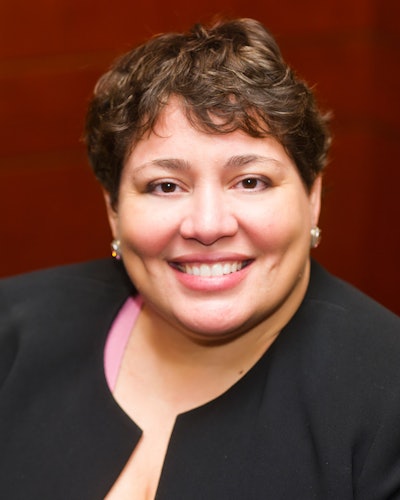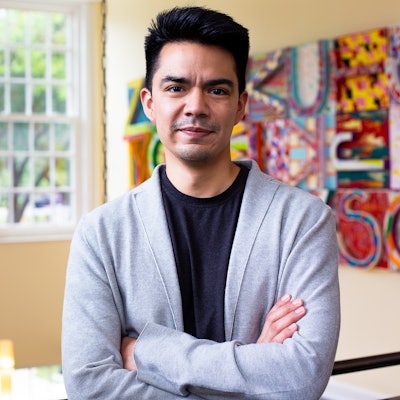 Dr. Deborah Santiago, co-founder and CEO of Excelencia in Education.
Dr. Deborah Santiago, co-founder and CEO of Excelencia in Education.
To answer that question, Excelencia reached out to seven Hispanic Serving Institutions (HSIs), a federal designation applied to institutions with a student population of at least 25% Latinx. They published their findings in a brief titled, Beyond Completion: Post-Completion Efforts at Hispanic-Serving Institutions.
“A lot of the institutions were wrestling with an authentic way for them to understand and measure their impact post completion,” said Dr. Deborah Santiago, co-founder and CEO of Excelencia. “Do we have an overt and common definition of what post-completion is? Can we follow up with students two to three years after graduation? Five years out, is [their job] aligned to their major, or is it extraneous?”
The brief does not offer one-size-fits-all solutions. But it does suggest institutions deepen their data collection efforts, build connections with local industries and employers looking to diversify, and push institutional leadership to intentionally serve its alumni students. It also identified three characteristics that led to increased post-graduation success for Latinx students: culturally relevant practices specifically chosen to accelerate Latinx post-completion success, customized metrics and measures to track students after graduation, and demonstrated progress in closing equity gaps in post-completion success.
Excelencia predicts that Latinx college enrollment will continue to increase, and, according to the U.S. Department of Labor, the workforce will be 20% Latinx by the end of the decade. Santiago said she hopes the brief can offer framework, parameters, and give readers a measure of confidence “that, if these institutions can take this on and find ways to include post-completion as part of the student lifecycle and experience, they can do that as well.”
Each institution in the brief was asked to define for itself what post-completion success meant, the data sources and measurements they used to assess it, success strategies they employed to improve outcomes, and any post-completion success practices.
At the University of Arizona, a qualitative and quantitative approach to data analysis is taken, using national and state resources as well as post-graduation surveys of its Latinx students. The university also offers “micro-internships,” paid opportunities to work with local community partners to build student workforce skills.
“We saw a lot of effort in Arizona where they were implementing programs on campus, but they were also linking it to surveys of students about their experience on the campus, with employers, and if [graduating] really meant they were seeing a change in their familial prospects,” said Santiago. “That, to me, is wrap around—it means the institution is part of a bigger ethos where the goal really is community and economic success.”
 Dr. Frank Fernandez, assistant professor of higher education administration and policy at the University of Florida.
Dr. Frank Fernandez, assistant professor of higher education administration and policy at the University of Florida.
“Some states have verbose data infrastructure, but not all states do,” said Fernandez. “Even when they do, they have a lot of protections to protect students and alumni, but those protections can make it difficult for researcher to access the data on their alumni.”
Santiago said that some participating institutions did not have easy access to statewide or even national data, but they were able to access local, metropolitical service data from surrounding areas and communities to assess the immediate economic impact graduates had in their region.
“We did have lots of conversations where [the institutions] were honest with struggles of opportunities in data collection but also in changing program strategy to be more focused on post-completion,” said Santiago. “A lot of institutions don’t have resources to connect with alumni and ask if five or ten years later, you’d credit your institution for the work you’ve gotten.”
Fernandez said that it was good for institutions to start thinking about post-graduation success as a way to measure the impact of a degree.
“Traditionally, the success outcomes have been done [are, did] you graduate within 150% time (six years in a four-year program), what was your starting salary, did you get a job within 12 months of graduation?” said Fernandez. “If people are taking out loans the whole time, that’s the other side of the coin. What do we mean, someone got a good job? Can they pay for all the things they need to live, to pay off the debt they incur for going to school? If you don’t have debt and your salary is $30,000 a year, versus if you have $5,000 a month student debt and same salary, that’s a whole different living situation.”
Santiago said that each participating institution was eager to find ways to hold themselves more accountable for their Latinx student’s success.
“What does it mean for this graduate to be in the Hispanic community, are there things we can do to help support them?” asked Santiago. “Those are the questions that I appreciated being in the space, as these institutions wrestled with it. None were afraid of data. Every one of them said, we can do more.”
Liann Herder can be reached at [email protected].






















